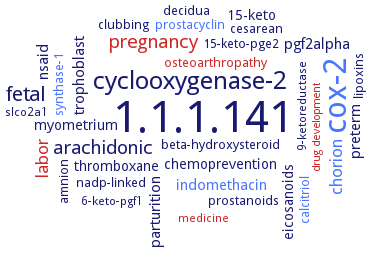Please wait a moment until all data is loaded. This message will disappear when all data is loaded.
Please wait a moment until the data is sorted. This message will disappear when the data is sorted.
A13G/A14S/Q15K/D36S/W37R
-
no activity
A14S/Q15K/D36S/W37R
-
no activity
C152A
-
similar activity as wild-type
C42A
-
similar activity as wild-type
C45F
-
similar activity as wild-type
C63A
-
similar activity as wild-type
C63F
-
10% of wild-type activity
D64N
-
similar activity as wild type
D86E
-
similar activity as wild type
D86N
-
similar activity as wild type
I17A
-
270% of wild-type activity
I17L
-
364% of wild-type activity
I17V
-
300% of wild-type activity
N91A
-
136% of wild-type activity
N91D
-
86% of wild-type activity
Q15K
-
approx. 200% of wild-type activity
Q15K/D36A/W37R
-
no activity with NAD+ as cofactor, low activity with NADP+ as cofactor
Q15K/D36S/W37R
-
no activity with NAD+ as cofactor, low activity with NADP+ as cofactor
Q15K/W37K
-
approx. 350% of wild-type activity
Q15K/W37R
-
approx. 350% of wild-type activity, strong activity with NADP+ as cofactor
Q15R
-
approx. 100% of wild-type activity
Q15R/W37K
-
approx. 200% of wild-type activity
Q15R/W37R
-
approx. 200% of wild-type activity, strong activity with NADP+ as cofactor
S193P
-
the missense mutation in exon 6 of the human HPGD gene encoding NAD+ dependent 15-hydroxyprostaglandin dehydrogenase is involved in the pathogenesis of isolated congenital nail clubbing
T11S
-
110% of wild-type activity
T188S
-
substantial activity, lower than wild-type
V186A
-
143% of wild-type activity
V186I
-
468% of wild-type activity
V186K
-
71% of wild-type activity
W37K
-
approx. 100% of wild-type activity
W37R
-
approx. 100% of wild-type activity
A140P

-
naturally occuring mutation in patients with pulmonary hypertropic osteoarthropathy. Homozygous individuals develop pulmonary hypertrophic osteoarthropathy secondary to chronically elevated prostaglandin E2 levels. Heterozygous relatives also show milder biochemical and clinical manifestations. After expression in Escherichia coli, the mutations renders the protein largely insoluble at 37°C, but mostly souble at 20°C. Mutant exhibits less than 1.5% of wild-type activity
A140P
-
the mutant shows no detectable activity, the A140P substitution renders the enzyme largely insoluble at 37°C, at 27°C, the mutant protein is partially soluble, and at 20°C it is mostly soluble
Y151A

-
no activity
Y151F

-
no activity
Y151F
-
site-directed mutagenesis, highly reduced activity compared to the enzyme
Y151S

-
no activity
additional information

-
C-terminal truncation decreases activity
additional information
-
enzyme silencing by RNAi method
additional information
-
identfication of catalytically important residues by site-directed mutagenesis
additional information
-
injection of wild-type enzyme, but not mutant enzyme, into mice transfected with A549 cells, reduces the ability of the cancer cell to proliferate in the mice, transfected A549 cells overexpressing the enzyme undergo apoptosis, overview
additional information
-
interleukin-1beta suppresses the enzyme expression, as well as down-regulation of cyclooxygenase-2 expression, whereas down-regulation of cyclooxygenase-1 has no effect on 15-PGDH expression, overview, silencing of IL-1beta-induced expression of COX-2 by RNAi method
additional information
-
identification of an insertion-deletion mutation in 15-hydroxyprostaglandin dehydrogenase exon 3, this alters the open reading frame from codon 78, truncating the protein after ten altered amino acids, and of a homozygous 2-bp deletion within the duplicated dinucleotide CTCT at nucleotides 175 and 176. This alters the reading frame from residue 59 and truncates the HPGD protein at residue 65 after seven altered amino acids. Both of these predicted truncated proteins lack the entire PGE2-binding domain and cause primary hypertrophic asteoarthropathy
additional information
-
up-regulation of cyclooxygenase-2 expression by pro-inflammatory cytokines is accompanied by down-regluation of 15-hydroxyprostaglandin dehydrogenase expression. Over-expression of cyclooxygenase-2 but not -1 also attenuates 15-hydroxyprostaglandin dehydrogenase expression. Similarly, overexpression of 15-hydroxyprostaglandin dehydrogenase inhibits interleukin 1beta-induced cyclooxygenase-2 expression and results in apoptosis. The levels of 15-hydroxyprostaglandin dehydrogenase expression in transfected cells correlate positively with those of mesenchymal markers, and negatively with those of epithelial markers
additional information
-
15-hydroxyprostaglandin dehydrogenase hypomorphic mice show a decreased level of enzyme mRNA and activity in all tissues examined. Mice show spontaneous preterm labor in the absence of progesterone withdrawal, and the onset of labor is preceded by prematurely increased concentrations of prostaglandin E2 and F2alpha. The fetal genotype plays a role in birth timing
additional information
-
overexpression of 15-hydroxyprostaglandin dehydrogenase significantly increases peroxisome proliferator-activated receptor gamma-mediated transcription in a prostaglandin E2-dependent manner
additional information
-
expression in nontumorigenic IEC-18 cells, with and without K-RasV12 and analysis of the ability of cells to form tumors in nu/nu mice. Transformed cells show increased 15-hydroxyprostaglandin dehydrogenase activity with decreased prostaglandin E2 and prostaglandin I2 levels, cyclooxygenase-2 and microsomal prostaglandin E synthase-1 expression and proliferation rates. Xenografts of cells expressing both the enzyme and K-RasV12 exhibit delayed tumor formation with negligible cyclooxygenase-2 and microsomal prostaglandin E synthase-1 expression and significantly decreased prostaglandin E2 levels. Tumors have decreased staining of the proliferative marker, Ki-67, and a significant increase in apoptosis in the central region of the tumor
additional information
expression in nontumorigenic IEC-18 cells, with and without K-RasV12 and analysis of the ability of cells to form tumors in nu/nu mice. Transformed cells show increased 15-hydroxyprostaglandin dehydrogenase activity with decreased prostaglandin E2 and prostaglandin I2 levels, cyclooxygenase-2 and microsomal prostaglandin E synthase-1 expression and proliferation rates. Xenografts of cells expressing both the enzyme and K-RasV12 exhibit delayed tumor formation with negligible cyclooxygenase-2 and microsomal prostaglandin E synthase-1 expression and significantly decreased prostaglandin E2 levels. Tumors have decreased staining of the proliferative marker, Ki-67, and a significant increase in apoptosis in the central region of the tumor




 results (
results ( results (
results ( top
top






